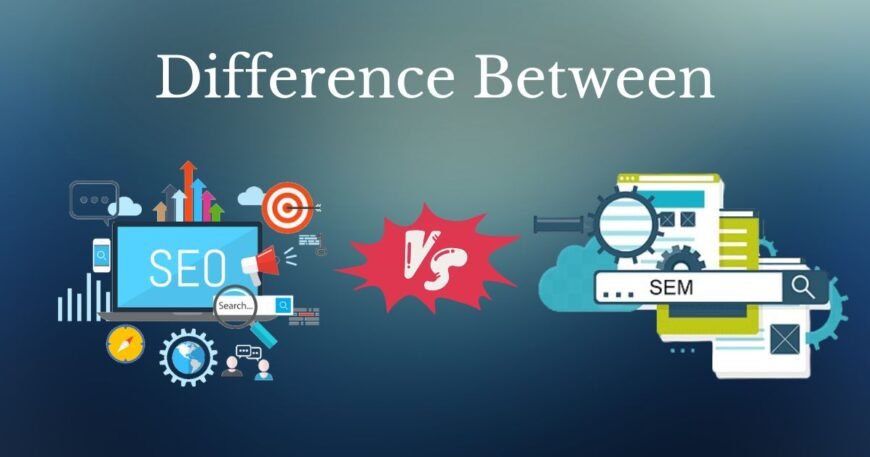The Difference Between SEO and SEM: Know the Key Differences
In the digital landscape today, businesses are constantly seeking ways to maximize their online visibility and drive traffic to their websites. Among the various strategies, Search Engine Optimization (SEO) and Search Engine Marketing (SEM) are two primary methods that are often confused. Understanding the distinction between SEO and SEM is fundamental for any business aiming to enhance its online presence.
What is SEO?
SEO stands for Search Engine Optimization. It encompasses a series of techniques aimed at enhancing a website’s organic (non-paid) visibility on search engines like Google, Bing, and Yahoo. The core objective is to have your website rank higher in search engine results pages (SERPs) for relevant keywords, ultimately driving more organic traffic.
Key Components of SEO
-
On-Page SEO: Involves optimizing individual pages to rank higher and earn more relevant traffic. This includes optimizing content, headings, internal links, and meta tags.
-
Off-Page SEO: Focuses on increasing the authority of your domain through backlinks and social media presence.
-
Technical SEO: Involves optimizing the backend of your website to ensure it meets the technical requirements of search engines.
Benefits of SEO
- Cost-Effective: While it requires an initial investment in time and resources, SEO can yield long-lasting results without ongoing costs for clicks.
- Builds Credibility and Trust: Higher organic rankings convey credibility to users.
- Improves User Experience: Good SEO practices also enhance the user experience, which can lead to higher conversion rates.
What is SEM?
SEM, or Search Engine Marketing, is an umbrella term that encompasses various strategies aimed at increasing a website’s visibility through paid advertising. SEM primarily focuses on paid search advertising, such as Google Ads, where businesses bid on keywords to have their ads appear at the top of search engine results.
Key Components of SEM
-
Pay-Per-Click (PPC) Advertising: Businesses pay for each click their ad receives, making it a direct way to gain visibility.
-
Ad Campaign Management: Involves creating, optimizing, and analyzing advertising campaigns to improve efficiency and ROI.
-
Keyword Research: Identifying the right keywords to target is crucial for effective SEM campaigns.
Benefits of SEM
- Immediate Results: Unlike SEO, which can take time to build momentum, SEM provides immediate visibility in search results.
- Targeted Advertising: Businesses can target specific demographics, locations, and even specific times, thereby reaching a highly relevant audience.
- Performance Tracking: With SEM, marketers can track metrics such as clicks, impressions, and conversions, allowing for real-time optimization.
Key Differences Between SEO and SEM
| Feature | SEO | SEM |
|---|---|---|
| Cost Structure | Primarily organic (no direct cost per click) | Pay-per-click (cost per engagement or impression) |
| Time to See Results | Long-term (can take months) | Short-term (immediate visibility) |
| Focus | Organic traffic and rankings | Paid advertisements and immediate visibility |
| Credibility | Higher credibility with organic results | Less organic credibility, can appear as “paid” |
| Sustainability | Long-lasting results | Temporary, lasts only as long as you pay for ads |
Conclusion
Understanding the difference between SEO and SEM is essential for any business looking to amplify its online presence. While SEO offers an organic and sustainable approach to traffic generation, SEM provides immediate visibility and targeted advertising solutions. Ultimately, a balanced strategy that incorporates both SEO and SEM can provide the best results, ensuring that your business not only ranks higher but also drives quality traffic to your website.
Invest in both methods to create a comprehensive digital marketing strategy that caters to both short-term and long-term goals. By leveraging the strengths of each, you can effectively enhance your online visibility and achieve better results in a competitive market.





